I’m in the middle of packing for our third international move in six years. Relocating across the border to Canada and back, and now across the Atlantic Ocean, has required us to sell off half of our belongings each time to save space and money on the move. For our latest move to Scotland, my goal is to keep only those irreplaceable and sentimental possessions that can fit into a 10×10 storage unit. The few things making the journey to the UK with us will travel via Send My Bag.
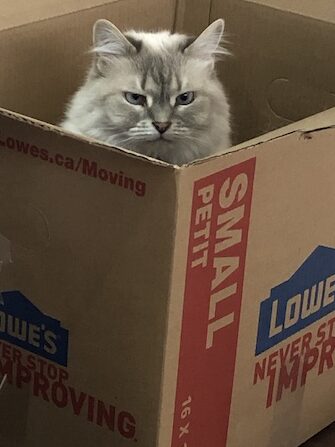
So many huge moves in so few years means I’ve become rather a pro at selling off our worldly goods. But with the advent of online sites like Craigslist and Kijiji, and now Facebook Marketplace, the yard sale of yore is having to evolve to keep up. I’ve developed what I call a “Curated Yard Sale” and since I’ve had a few people ask me for my yard sale tips, I thought I would share them in these posts.
Back in the day holding a yard sale was just a matter of gathering everything you want to sell, pricing it, and taping up a few signs in the community. Maybe an ad in the local paper if you had enough to sell to justify the effort and expense. This method is still an option, and a good one if you just want to get rid of excess stuff. But for the time spent setting it up and selling it off, it might be just as effective to haul it off to your local thrift store.
Thrift stores are a blessing. I’ve found myself more than once in the aisle of our local thrift store praying for winter coats or tennis shoes for the girls. Clothing two toddlers on a small church salary was a challenge. Now I have two teens exploring their own styles and the thrift store is a great place for them to do that as well as save money and the environment.
“if you need to make money on your yard sale a simple set it up and sell it off yard sale is not the way to go.”
However, if you need to make money on your yard sale, a simple set-it-up and sell-it-off yard sale is not the way to go. I’ve heard this from friends in the US and have experienced it for myself in Canada. Yard sale shoppers are expecting dirt cheap prices for their efforts of showing up in person to purchase things. Most shoppers also don’t want to waste time digging through boxes of junk to find a gem. Since this is the case, it’s better to begin your yard sale online weeks or even months ahead of time. Your final in-person yard sale should be only the best of what’s left after the pre-sale process.
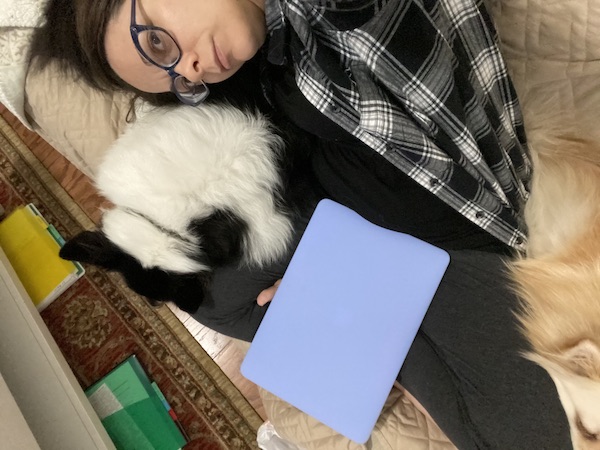
Start Your Curated Yard Sale Online First
Post ads online first to get the best price. Shoppers want to be able to peruse your belongings just as they would any other online retailer’s inventory. Sales sites let buyers search by color, size, location, price and more. So when someone contacts you about a purchase, they’re usually more serious about following through. Online sites also help you reach a broader audience for your merchandise, and more eyes means more buys!
Sell items by the lot. For some things – such as clothes, books, or children’s art supplies – it’s helpful to group them together and sell the whole lot for one price . Listing each baby onesie or child’s t-shirt separately is not as effective as selling off a dozen onesies or shirts for ten dollars. Is there a buyer who actually wants fifteen chapter books? Yes! I’ve seen shoppers buy a box of books to split with a friend or use in a school classroom. Sometimes they’re just purchasing a box of kitchen gadgets to resell them at a flea market and that’s fine too. You’re getting the best price for you, so don’t worry about what happens afterwards.
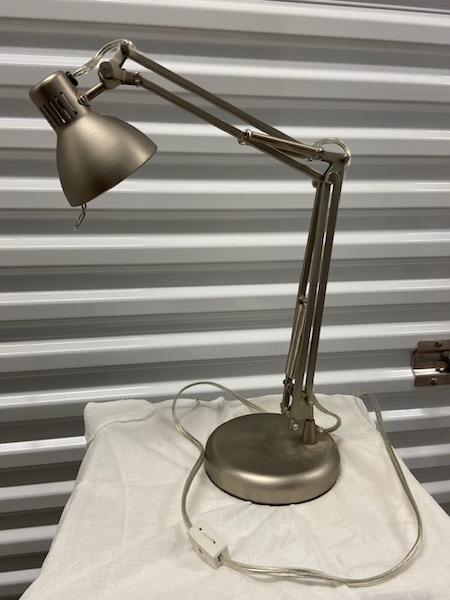
Create a good ad and post it in the right place. A picture is worth a thousand words and a few extra dollars, so have good photos of your items in your posts. Include photos of the original box or manual, if you have them, so buyers can see a product’s specifications. I like to spread a tablecloth out on the floor in front of a blank wall to reduce any visual clutter that would detract from the item I want to sell. If you’re selling a box of books or a bag of clothes, spread the contents out on the tablecloth and take enough pictures to capture all the contents. Take close-up photos of the popular book titles or some of the labels and tags to highlight the brands. For articles of furniture or anything where size is a factor, include a ruler or tape measure in the photo to show the measurements. Video can also be helpful if you need to prove that a television or tool works as intended.
Don’t wait until you have everything gathered that you want to sell to begin the online phase of your yard sale. Photograph items as you sort. Then, at the end of the day, create the posts and upload the photos. This saves time, especially when the website has an easy-to-use app associated with it like Facebook Marketplace.
Be very specific in your ad copy. While it takes more time up front, it will save you time later by weeding out those who aren’t interested in your item. Users scroll through ads just like they do their news feeds. They get excited and react without bothering to click over and read the finer details. Make the title for your ad as detailed as you can because that’s all some will read before rushing to contact you. Rather than “Hunter Boots,” title your post “Size 7 Navy Women’s Hunter Boots – College Park.” This helps filter potential buyers.
“Make the title for your ad as detailed as you can because that’s all some will read before rushing to contact you.”
In the content section of the ad, repeat the title information along with anything else you think the buyer would need to know. Be honest about your items. It’s the right thing to do, and you don’t want to waste your time or the buyer’s. Include brands, titles, or genres, as appropriate. This should be evident from the uploaded pictures, but I’ve encountered plenty of buyers who don’t bother to scroll through all the photos. Ads for furniture should include the piece’s measurements and any other information needed for transporting it.
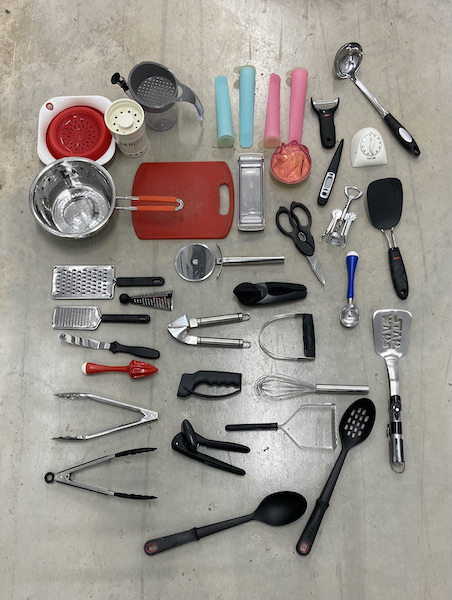
When pricing an item estimate what a thrift store would sell something for and price it a few dollars less. Residents in Toronto were used to paying higher prices for everything and Marketplace purchases were no different. Unless the item for sale was seasonal, then it was almost impossible to sell at any price. In my experience, Canadians will not buy ice skates in July or patio furniture before May, and school supplies are not to be supplied until the middle of August. I’ve even seen Canadians apologize for selling a winter coat during the summer. Perhaps it’s because homes in Toronto lack storage space. Or, maybe Canadians just don’t want to think about the cold weather more than they must.
Back in the United States, folks will buy anything at just about any time. Someone’s sister’s child might grow into that coat by December so no harm in grabbing it and holding on to it until then. My southern relatives will not let a deal go by if they can think of a person who might use it. However, be ready to haggle. I found American buyers like to offer substantially less than the asking price. So to counter this, I price the things I’m selling a little higher. If I would like to make $20 on a bookshelf, I might price it at $25 knowing that a potential buyer will probably offer me $15. Rather than trying to move the buyer incrementally higher I offer to “meet in the middle” at $20 which is the price I wanted originally. Personally, I like this tactic because I’m uncomfortable haggling with people and it reduces the tension of a lengthy back and forth. I’ve rarely had a buyer refuse to meet me in the middle if I’ve priced something fairly.
“I like this tactic because I’m uncomfortable haggling with people and it reduces the tension of a back and forth. I’ve rarely had a buyer refuse to meet me in the middle if I’ve priced something fairly.”
Craigslist and Kijiji were still popular in Canada during our last cross border move, but both are quickly being replaced by Facebook Marketplace. In the US, the competition is not even close when it comes to sales and ease of use. Before listing items on Facebook Marketplace, join a few of the local “Buy and Sell Groups” in your area. In addition to “Buy and Sell” these groups might have “Garage Sale” or “Yard Sale” in their title and be organized by city, county, or region. Some have limits on the number of posts that can be made in a day or restrict pick-ups to certain zones if a city or region is particularly large. When you post your ad on Facebook Marketplace, the website will ask if you would like the ad posted with these other groups.
In addition to Marketplace, some community groups on Facebook will also let you post things for sale. Again, this varies depending on the group and there may be a limit on the number of “for sale” posts a member can add per day or per week. To be a good neighbor, don’t flood the feed. Post strategically those items you think are most relevant to the group. For example, a group for neighborhood parents might be the place to list toys and baby gear for sale. To maximize the limited number of “for sale” ads, group similar items together and then edit the photos to include the price for each item.

Another option, if you have a lot to sell, is to announce your upcoming move to the community group and ask the other members to reply with their shopping lists. I did this with our most recent move across the border and it was much more efficient than listing items one at a time. Chances were good that whatever someone was looking to buy, I was probably selling it. I became a one-woman department store. Did I have a dining room table for sale? Yes! Bookshelves? Here are the photos and sizes. Bikes? A dirt bike and two scooters. After a few inquiries and sales, I could identify prospective buyers for some of our stuff. If someone bought the American Girl Horse Barn, maybe they would be interested in the American Girl camping set too. Often this would be the case.
As soon as I have a confirmed buyer, I bag up the purchase, and write the buyer’s name, the name of the item, its price, and the delivery arrangements such as meeting place or date and time of pick up, on a Post-It note that I stick on the bag. If someone is buying more than one thing, I list all the items along with the total. This way there can be no last-minute confusion. I placed a bin near the front door to keep the bags together and organized.
“I bag up the purchase, and write the buyer’s name, the name of the item, its price, and the delivery arrangements on a Post-It note that I stick on the bag”
During the pandemic, it became popular to do what’s known as a “porch pick up.” The the seller leaves the purchase on the porch for the buyer to pick up at a certain time or when convenient. In my experience, this practice is more popular in Canada than in the United States where buyers would prefer to meet with the seller in a public space like a Walmart parking lot. I find porch pick up just as safe and it saves time. I simply set the bag with the item on the porch and then send the buyer a photo of it, so they know what to look for at pick up. If there’s rain in the forecast or you’re worried about theft, stashing the bags in a Rubbermaid tub on the porch might be a good option.
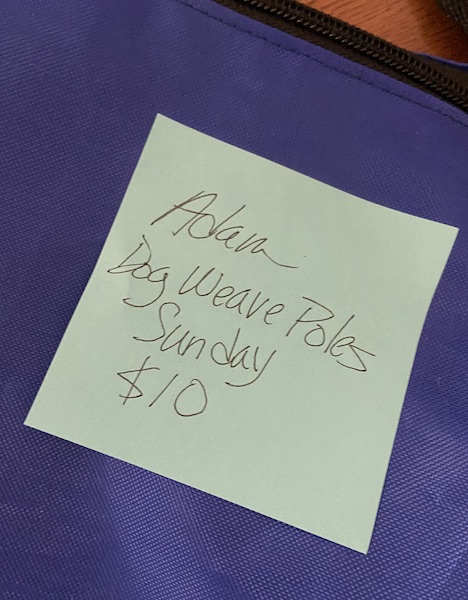
Payment in Canada was a breeze because you could transfer money easily through your bank account. In the US apps like the Cash App and Venmo are easy to use. Being paid in advance decreases your likelihood of no-shows when it comes time for pick up. If these systems aren’t an option, I have had buyers leave money in an envelope in the mailbox or in a small black tea tin on our front porch. In all my time doing this, I’ve never had a customer not pay.
If you’re willing to deliver an item, be sure to mention this as an option. In the era of Post Mates and Amazon, many buyers are willing to chip in a small delivery fee for the service. When I’m in the middle of a move, I rarely promise delivery. Even meeting up can be time consuming, so the price of the item needs to exceed the cost of gas and my time. Usually, only if the buyer has mobility issues or is making a large purchase will I deliver.
In the next post, How to Host a Curated Yard Sale Part 2 I’ll discuss how to sift and sort your house, and when it’s time to consign.


























